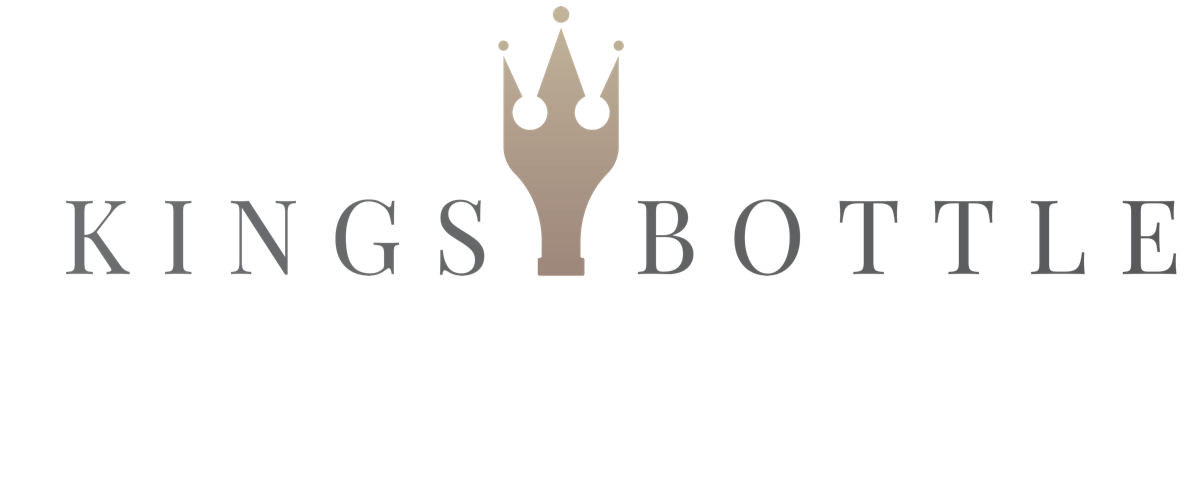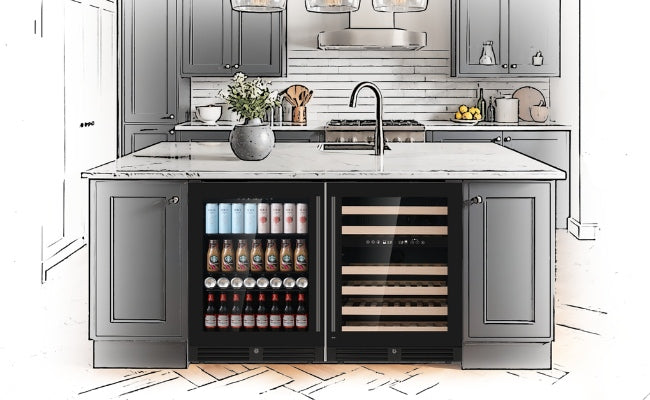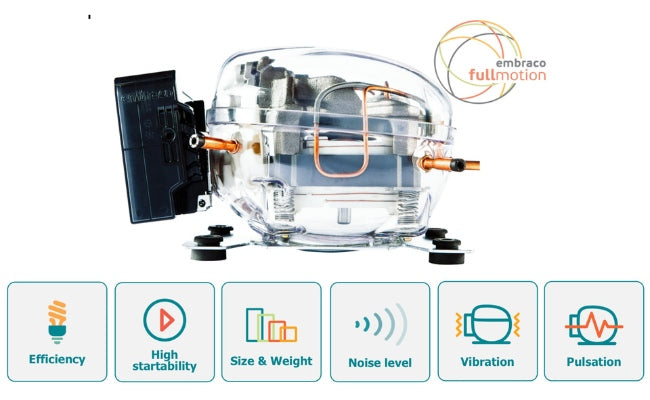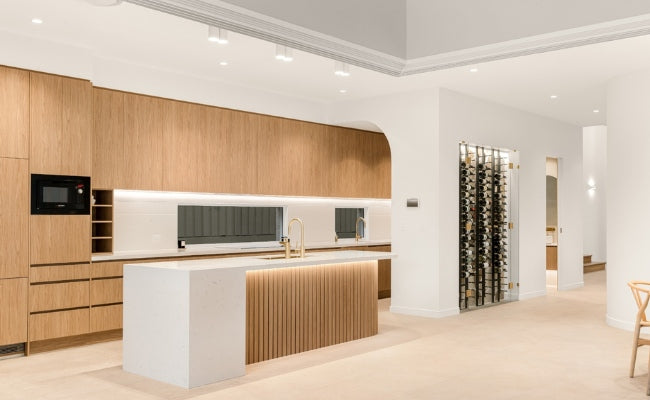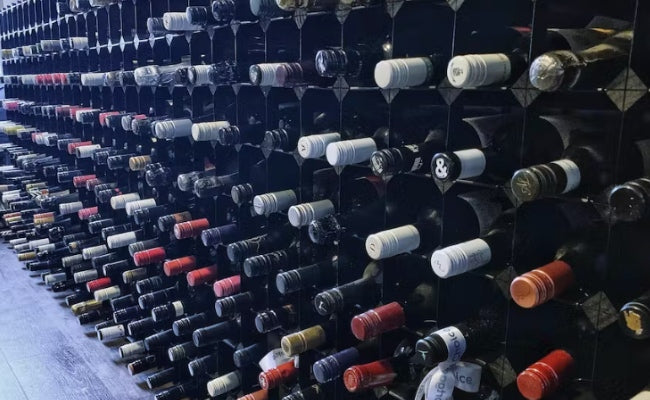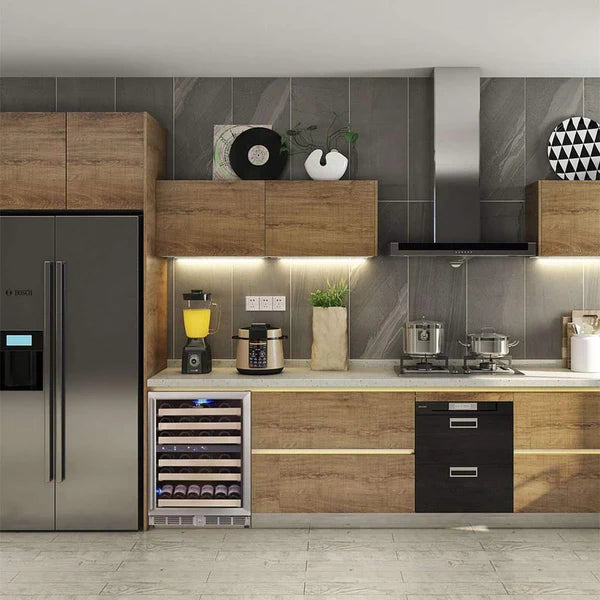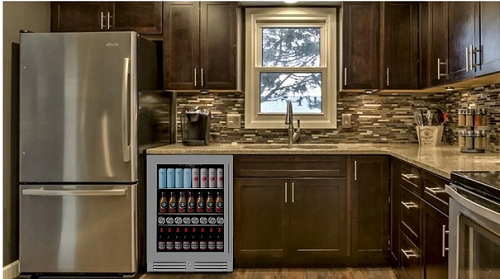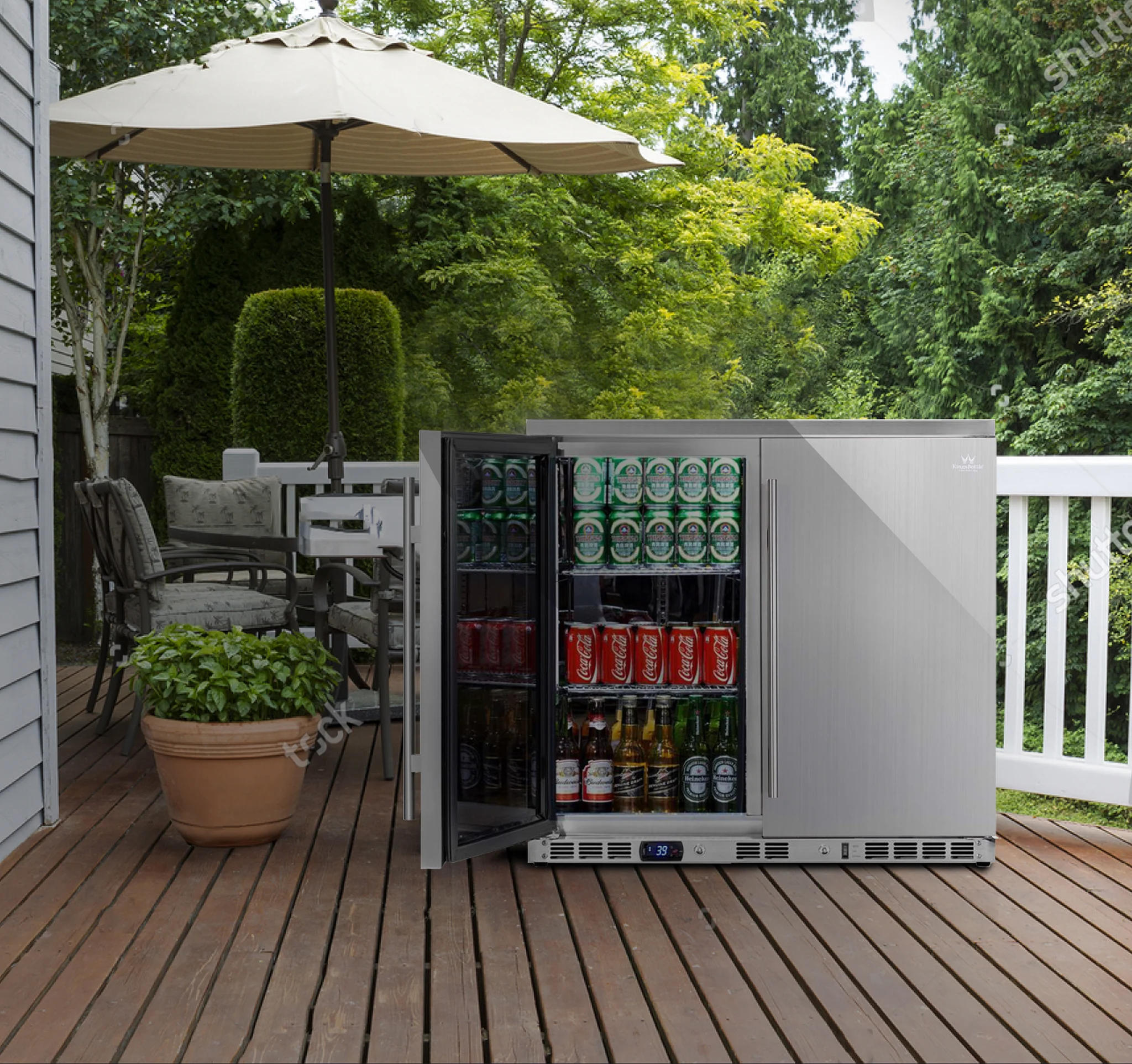
Keeping It Cool: Wine Storage Tips for Red, White, and Sparkling Wines
Are you an avid wine enthusiast? Do you have a cellar full of bottles, but don't know how to properly store them? Keeping your wine at the right temperature and humidity is essential for preserving its flavor and quality, so it's important to know how to store red, white, and sparkling wines. In this blog post, we'll precisely provide essential wine storage tips for each type of wine, as well as advice on the best wines to store in your home. Read on to learn how to keep your beloved bottles in perfect condition!

Understanding Wine Storage Temperatures
As wine lovers, we all want to preserve the flavor and aroma of our favorite wine bottles for as long as possible. One of the essential elements to consider when storing wine is temperature. The ideal temperature for wine storage ranges from 45-65 degrees Fahrenheit, but what many of us don't realize is that the optimal temperature varies according to the type of wine.
Storing your wine at the wrong temperature can compromise its quality and flavor. Extreme temperatures, whether hot or cold, can cause wine to age faster, oxidize or develop unwanted aromas. This is why it is essential to understand the ideal storage temperature for your wine collection.
It's like taking care of a child; you need to understand their needs, such as their ideal temperature for sleeping or playing outside. It's the same with wine, it has its own needs, and it's up to us to provide them. To maintain your wine collection's quality, here's a rundown of the optimal storage temperature for different types of wine.
Red wines are known for their robust, bold flavors. To maintain these qualities, store red wine at temperatures between 50-65°F. Anything over 70°F can cause red wine to lose its fruity taste and develop undesirable aromas, while temperatures below 50°F can halt aging.
White wines are known for their crisp and refreshing taste, and their optimal storage temperature is between 45-55°F. If stored too cold, white wine can develop a bitter taste, while warm storage temperatures can cause it to oxidize quickly and lose its refreshing quality.
The effervescence and carbonation of sparkling wines are what makes them so delightful. To maintain their carbonation, store sparkling wines between 40-50°F. If stored at temperatures that are too warm, the cork can pop, causing the wine to lose its bubbles.
Understanding the ideal storage temperature for different wines is a crucial step to ensuring that your wine collection retains its flavor, aroma, and overall quality. Whether you're storing wine for a special occasion or saving it for years, maintaining proper temperature is key. Think of it as taking care of a dear friend – giving them the perfect environment to thrive and be their best self.
Tips for Storing Red Wines
Whether you prefer a bold Cabernet Sauvignon or a light Pinot Noir, these tips for storing red wines will help you maintain the perfect temperature for your favorite bottle.
- Keep your red wine bottles in a cool, dark place
Sunlight can be detrimental to the quality of your red wine. It can cause the wine to age prematurely and even develop off flavors. That’s why it’s important to keep your red wine bottles in a cool, dark place away from any direct sunlight.
- Store your red wine bottles horizontally
Unlike white wine and sparkling wine, red wine bottles should be stored horizontally. This is because red wine corks are typically made of natural cork, which can dry out over time. When the cork dries out, it allows oxygen to enter the bottle and can cause the wine to spoil. By storing your red wine bottles horizontally, the cork stays moist, which prevents the wine from oxidizing.
- Keep your red wine bottles at the right temperature
Red wines should be stored at a temperature between 50°F and 60°F. Any temperature above 70°F can cause the wine to age too quickly, which can impact the wine’s flavor and aroma. If you’re storing your red wine bottles in a wine cellar, make sure that the temperature is consistently between 50°F and 60°F. If you don’t have a wine cellar, you can store your red wine bottles in a closet or basement.
- Don’t move your red wine bottles too much
As much as we love admiring our wine collection, moving red wine bottles too much can disturb the sediment at the bottom of the bottle, which can impact the wine’s flavor. If you need to move your red wine bottles, do it gently and avoid shaking them.
Tips for Storing White Wines
When it comes to white wines, proper storage can mean the difference between a fresh, crisp sip and a lackluster pour that leaves you feeling disappointed. So, what should you keep in mind when it comes to storing your white wines? Here are a few tips to ensure your favorite whites are always at their best.
- Keep It Cool:
Just like with red wines, it's important to keep white wines at a consistent temperature. Aim to store your whites between 45-55°F to ensure that they maintain their fresh flavors and aromas. Avoid storing your bottles in warm areas, like near windows or heat sources, which can cause the wine to spoil or age too quickly.
- Stand Them Up:
Unlike with red wines, white wines should be stored upright. This allows any sediment to settle at the bottom of the bottle instead of mixing in with the wine. This is especially important for sparkling whites, as any sediment can affect the bubbles.
- Be Mindful of Light:
Exposure to light can cause white wines to develop an unpleasant taste. Keep your bottles stored in a dark or dimly lit area to avoid any unwanted flavors.
- Consider Humidity:
While humidity isn't as important for white wines as it is for reds, it can still have an effect on the wine. If the air is too dry, the cork can dry out and shrink, allowing air into the bottle and spoiling the wine. Aim for a humidity level between 50-80% to ensure your white wines are stored in optimal conditions.
- Serve Them Chilled:
While not directly related to storage, it's important to serve your white wines at the appropriate temperature. A chilled white wine can be a refreshing and delightful treat, while a warm one can be lackluster and dull. Keep a wine cooler or refrigerator on hand to ensure your whites are always served at their best.
Tips for Storing Sparkling Wines
If you're a fan of bubbles, then you'll want to make sure you're storing your sparkling wines properly to keep those effervescent sensations alive and kicking. Here are some tips for keeping your sparkling wines fresh and ready for any celebration.
- Store upright - Unlike red and white wines, sparkling wines should be stored upright to keep the cork moist and prevent it from drying out. If the cork dries out, it can let air into the bottle and ruin the wine's bubbles.
- Keep it cool - Sparkling wines should be stored in a cool place away from sunlight and heat. A temperature of 45-55°F is ideal for storing your sparkling wines. If it gets too hot, the wine can expand and push the cork out, causing the wine to spoil.
- Limit vibrations - Vibrations can also impact the quality of sparkling wine. Avoid storing it in a place where there is a lot of foot traffic or machinery. Limit the movement of the bottle as much as possible to prevent any damage to the wine.
- Chill before serving - To get the best experience from your sparkling wine, make sure to chill it properly before serving. Place the bottle in a bucket of ice water for about 20-30 minutes, or in the refrigerator for a few hours before serving. This will ensure that your sparkling wine is at the optimal temperature for enjoyment.
Other Considerations for Wine Storage
Now that we've covered the basics of wine storage temperatures and tips for red, white, and sparkling wines, it's important to consider a few other factors that can impact the longevity and quality of your wine.
One of the biggest considerations is humidity. Ideally, wine should be stored in a space with a humidity level between 50 and 70 percent. If the humidity is too low, corks can dry out and allow air into the bottle, which can spoil the wine. On the other hand, if the humidity is too high, it can cause mold growth or damage to labels.
Another factor to consider is the angle at which your wine is stored. Most wine bottles are designed to be stored horizontally, which helps keep the cork moist and prevents air from entering the bottle. However, if you're storing sparkling wine or champagne, it's best to keep them upright to avoid losing carbonation.
Light can also impact the quality of your wine. UV rays can cause chemical reactions that affect the taste and aroma of your wine. That's why it's important to store your wine in a dark or low-light environment. If you're storing your wine in a glass-fronted wine cooler, consider covering the glass with a cloth to prevent exposure to sunlight.
Finally, it's important to handle your wine with care when storing it. Wine bottles are fragile and can break easily, so be sure to handle them gently. If you need to move your wine, use a wine cart or similar tool to avoid any accidental bumps or drops.
Taking all of these factors into consideration when storing your wine can help ensure that it stays in top condition for years to come. As wine lovers, we all know the joy of opening a perfectly aged bottle of wine and sharing it with loved ones. So, let's make sure we're doing everything we can to keep our wine in tip-top shape. Cheers!
Conclusion
So, whether you're storing a full-bodied red, a crisp white, or a bubbly sparkling wine, remember to keep it cool and away from light and vibrations. And don't forget to check in on your wine every once in a while, making sure it's stored in optimal conditions.
When you finally open that bottle of wine that you've been storing for a special occasion, the anticipation can be almost overwhelming. But when you take that first sip and taste the rich flavors that have developed over time, all the effort you put into storing your wine properly will have been worth it.
In the end, it's not just about preserving the wine – it's about creating memories and savoring those special moments with loved ones. So, take care of your wine, and it will take care of you in return. Cheers to a lifetime of great wine experiences!
